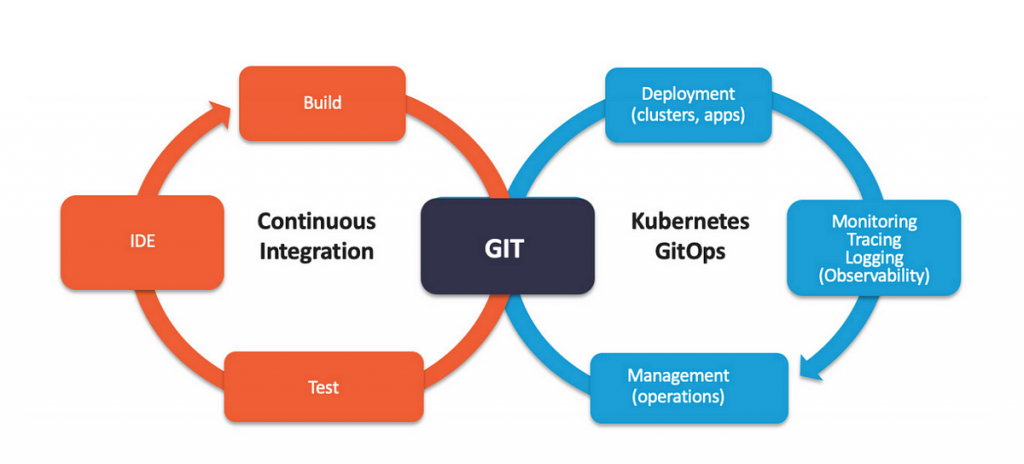
Are you tired of manually deploying your applications and updates? Are you looking for a more efficient way to manage your software development process? Look no further than GitOps.
GitOps is a methodology for continuous delivery that utilizes Git repositories as the single source of truth for both infrastructure and application code. By using GitOps, you can automate your deployment process and achieve faster delivery times.
What is GitOps?
GitOps is a way of managing infrastructure and application code using Git repositories. In GitOps, all changes to the infrastructure and application code are made through Git commits. This means that the Git repository is the single source of truth for both the infrastructure and application code.
GitOps is a continuous delivery methodology that enables developers to manage their applications and infrastructure in a more efficient way. By using GitOps, developers can automate their deployment process and ensure that their applications are always up-to-date.
How does GitOps work?
GitOps works by using Git repositories to manage infrastructure and application code. Developers make changes to the code and push those changes to the Git repository.
The Git repository acts as the single source of truth for both the infrastructure and application code. Whenever a change is made to the code, it triggers an automated deployment process. This process ensures that the changes are applied to the infrastructure and application code in a consistent manner.
Advantages of GitOps
GitOps has several advantages over traditional deployment methods.
One of the main advantages of GitOps is that it enables developers to automate their deployment process. This means that developers can spend less time on manual tasks and more time on developing new features and improving their applications.
Another advantage of GitOps is that it provides a single source of truth for both infrastructure and application code. This means that developers can ensure that their applications are always up-to-date and that any changes are made in a consistent manner.
How to implement GitOps
Implementing GitOps is a fairly straightforward process.
First, you need to create a Git repository for your infrastructure and application code. You can use any Git hosting service, such as GitHub, GitLab, or Bitbucket.
Next, you need to set up a GitOps tool. There are several GitOps tools available, including Flux, ArgoCD, and Jenkins X. These tools enable you to automate your deployment process and ensure that your applications are always up-to-date.
Finally, you need to configure your infrastructure and application code to use GitOps. This involves setting up a pipeline that automatically deploys changes to your infrastructure and application code whenever a change is made to the Git repository.
Conclusion
In conclusion, GitOps is a powerful methodology for continuous delivery that enables developers to automate their deployment process and achieve faster delivery times. By using Git repositories as the single source of truth for both infrastructure and application code, developers can ensure that their applications are always up-to-date and that any changes are made in a consistent manner.
Implementing GitOps is a fairly straightforward process that involves setting up a Git repository, a GitOps tool, and a pipeline for deploying changes. With GitOps, you can take your software development process to the next level and achieve faster delivery times.
- Building a DevOps Culture: Tips and Strategies - April 4, 2024
- Why Understanding DevOps Could Be Your Key To Success In The Music Industry - April 4, 2024
- Top Picks: The Best Laptops for Graphic Designers in 2024 - March 31, 2024

